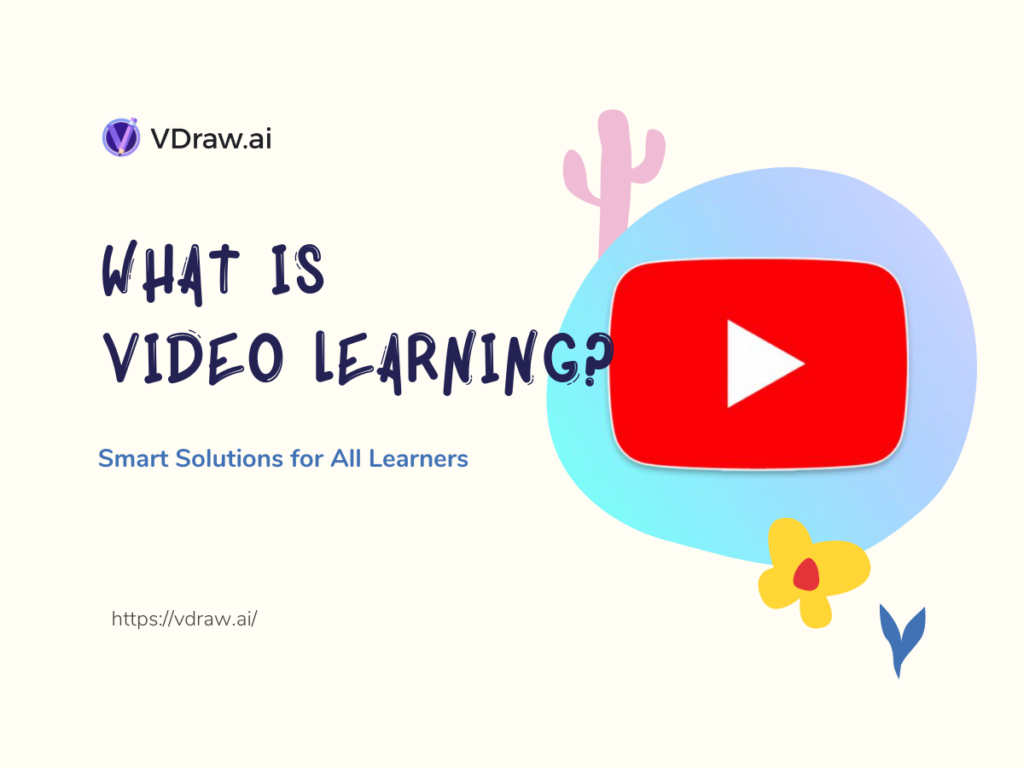
"Last night, I found myself stuck on a complex calculus problem at 2 AM. My exam was just hours away, and panic was setting in. That's when I discovered a brilliant YouTube tutorial that not only solved my problem but made the concept crystal clear. Using VDraw's AI YouTube Summary Generator, I quickly transformed that 30-minute video into a concise infographic that became my perfect study guide. This experience taught me something valuable - video learning isn't just another way to study; it's a game-changer in how we master new skills."
Sound familiar? You're not alone. In today's digital age, video education has revolutionized how we absorb information. Whether you're a student racing against deadlines, a professional upskilling for career growth, or simply someone passionate about learning, understanding the power of education can transform your educational journey. Let's dive deep into this exciting world and discover how tools like VDraw are making it even better.
Understanding Video Learning
Multimedia education represents a dynamic shift in how we consume educational content. It's not just about passive viewing; it's about engaging with visual and auditory content in a way that maximizes retention and understanding. This modern approach to learning has become increasingly popular, especially since the global pandemic pushed education into the digital realm.
When we talk about digital visual instruction, we're referring to a comprehensive educational approach that combines visual elements, audio explanations, and interactive components to create an immersive learning experience. Unlike traditional textbooks or lectures, screen-based educational content engages multiple senses simultaneously, making it easier for learners to grasp and retain complex concepts.

The Compelling Benefits of Video Learning: Real Results, Real Impact
1. Enhanced Retention and Understanding
Imagine learning about human anatomy in medical school. Traditional textbooks show static 2D images of the heart, but a video learning platform offers an interactive 3D model that you can rotate, zoom, and watch in motion. You see blood flowing through chambers, valves opening and closing, and the electrical signals triggering each heartbeat.
Dr. Chen, a cardiology resident, shares: "What took me weeks to understand from textbooks became crystal clear in a single video session. Watching the heart's electrical conduction system in action helped me understand arrhythmias better than any diagram ever could."
This superior understanding isn't just subjective. A 2023 study from Johns Hopkins Medical School revealed that medical students using interactive anatomical videos achieved a 35% higher accuracy rate in diagnostic exercises compared to those using traditional learning methods. The same study found that these students retained the information for 40% longer.
"During my practical exams, I could literally replay the video demonstrations in my head," explains Marcus, a third-year medical student. "The dynamic visuals helped me remember not just what each part does, but how everything works together in real-time."
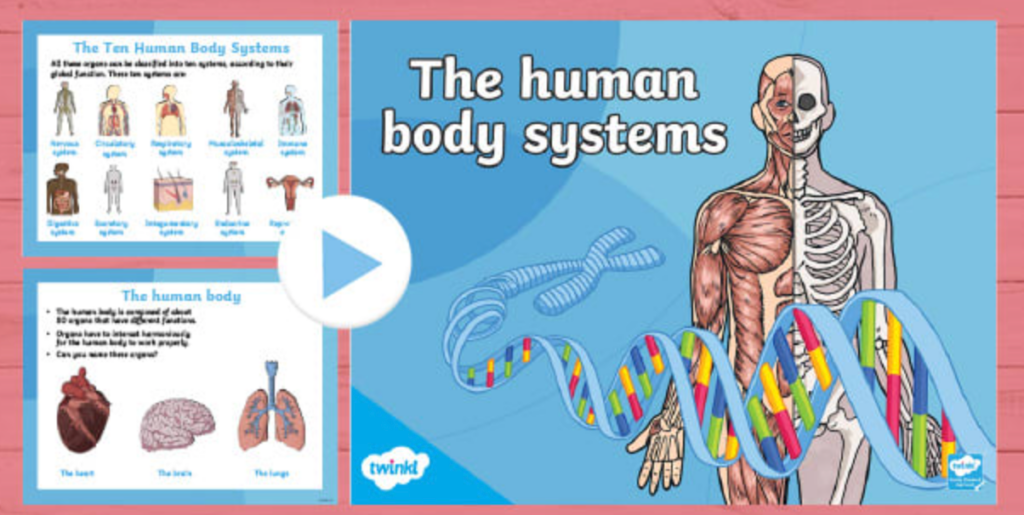
2. Flexibility That Fits Your Life
Picture this: A working professional named James needs to learn Python programming for a career switch.
- Morning commute? He watches coding tutorials.
- Lunch break? Quick practice sessions with interactive coding videos.
- Evening at home? Deep-dive into complex programming concepts.
No more choosing between work and education – video learning adapts to YOUR schedule, not the other way around.
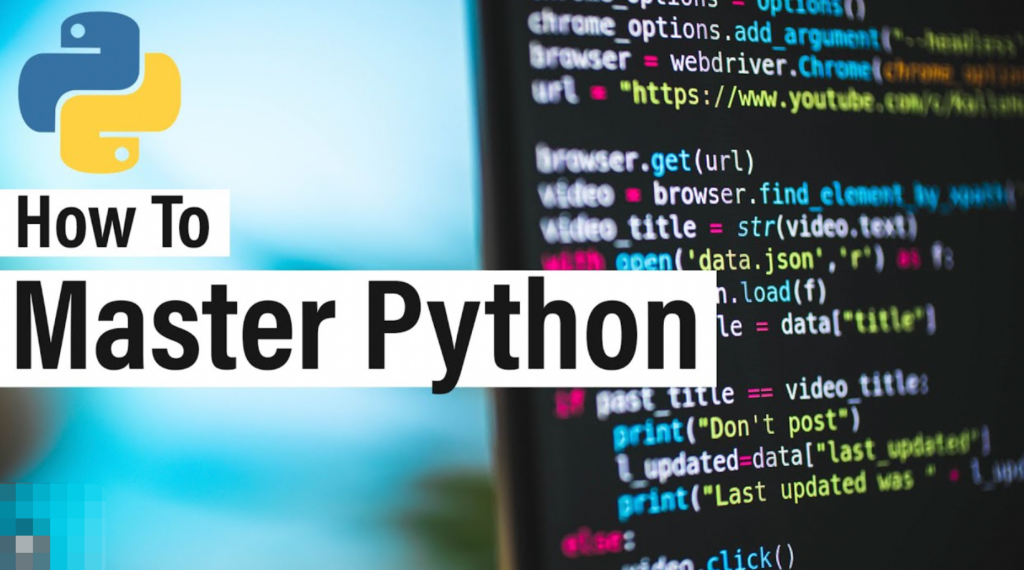
3. Cost-Effective Education That Delivers Results
Let's break down the numbers:
- Traditional Computer Science Degree: $30,000+ per year
- Bootcamp: $15,000 for 12 weeks
- Video Learning Path: $300-500 for comprehensive courses
Mike, a self-taught developer, shares: "I spent $400 on Udemy courses and landed a $85,000 job. The ROI is incredible. I learned exactly what I needed, when I needed it."

4. Interactive Learning That Keeps You Engaged
Gone are the days of passive watching. Modern video learning means:
- Solving a math problem alongside your instructor
- Pausing to complete coding challenges in real-time
- Getting immediate feedback on your solutions
- Joining live Q&A sessions with experts
"It's like having a personal tutor who never gets tired of repeating things," explains Lisa, a medical student. "I can practice surgical procedures through 3D animations repeatedly until I'm confident, before ever touching a real patient."
5. Measurable Progress, Visible Results
Track your journey with concrete metrics:
- Complete a 5-minute video quiz and instantly know where you stand
- Watch your coding skills grow through progressive project completion
- See your language proficiency improve through video-based assessments
- Build a portfolio of completed projects alongside your video courses
Tom, a language learner, notes: "After six months of video-based learning, I went from zero Japanese knowledge to holding basic conversations. I could literally see my progress through completed lesson modules and conversation practice videos."

Types of Video Learning Content
1. Tutorial Videos
Tutorial videos are step-by-step guides that walk viewers through specific processes or concepts. These videos are particularly effective because they show rather than tell, making complex procedures easier to understand and follow.
Common applications include:
- Software training: Learning new programs and applications
- Technical skills: Understanding complex technical processes
- Creative arts: Following along with art, music, or craft projects
- Academic subjects: Solving mathematical problems or conducting scientific experiments
2. Lecture Captures
Lecture captures bring the traditional classroom experience into the digital age. These recordings preserve the depth and detail of full academic lectures while adding the convenience of online access.
Key features include:
- Complete coverage of academic topics
- Expert explanations and insights
- Real classroom discussions and Q&A sessions
- Supplementary materials and references

3. Microlearning Videos
Microlearning videos are short, focused content pieces that tackle specific topics in bite-sized chunks. These videos typically range from 2-7 minutes and are designed for maximum impact in minimal time.
Benefits include:
- Quick consumption of specific information
- Higher engagement rates
- Better retention of focused content
- Easy integration into busy schedules
4. Interactive Educational Videos
Interactive educational videos take learning to the next level by incorporating engagement elements throughout the viewing experience.
Common interactive features include:
- Embedded quizzes to test understanding
- Clickable hotspots for additional information
- Decision points that affect video progression
- Interactive simulations and demonstrations
Popular Video Learning Platforms
1. YouTube
As the world's largest video platform, YouTube has become an invaluable resource for people learning. Its vast library of educational content covers virtually every topic imaginable.
Key educational features:
- Extensive range of educational channels
- Playlist organization for structured learning
- Closed captions in multiple languages
- Speed control for personalized viewing
- Comment sections for community discussion
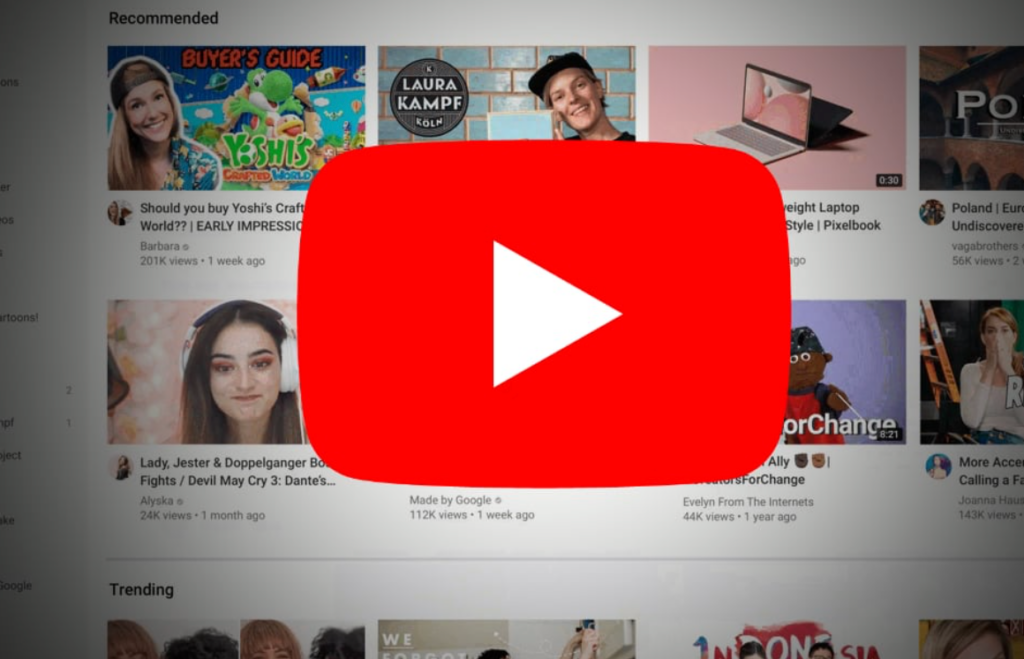
2. Coursera
Coursera partners with top universities and organizations to deliver high-quality online courses through video.
Platform highlights:
- University-level course content
- Structured learning paths
- Professional certificates
- Peer-reviewed assignments
- Expert instructor feedback
3. Khan Academy
Khan Academy has revolutionized free education through its comprehensive video platform for learning.
Distinctive features:
- Progressive learning paths
- Practice exercises
- Personalized learning dashboard
- Multi-language support
- Comprehensive subject coverage
Essential Tools and Strategies
As digital educational platforms continue to expand, learners are faced with a new challenge: how to effectively process and retain the wealth of information available. This has led to the development of innovative tools designed to enhance the multimedia instruction experience.
Smart Learning Tools for the Digital Age
The evolution of digital educational media has sparked a new generation of tools that help learners maximize their educational experience. From AI-powered summarizers to sophisticated note-taking applications, these tools are transforming how we interact with instructional multimedia content.
1. Visual Summary Tools
One of the most significant innovations in this space is VDraw's AI YouTube Summary Generator, an AI-powered tool that transforms educational videos into comprehensive visual summaries. This technology addresses one of the biggest challenges in learning with video: time management and information retention.
Key features:
- Instant infographic generation from video content
- Multiple template options for different learning styles
- Customizable text and layout options
- High-quality visual exports
- User-friendly interface for quick implementation
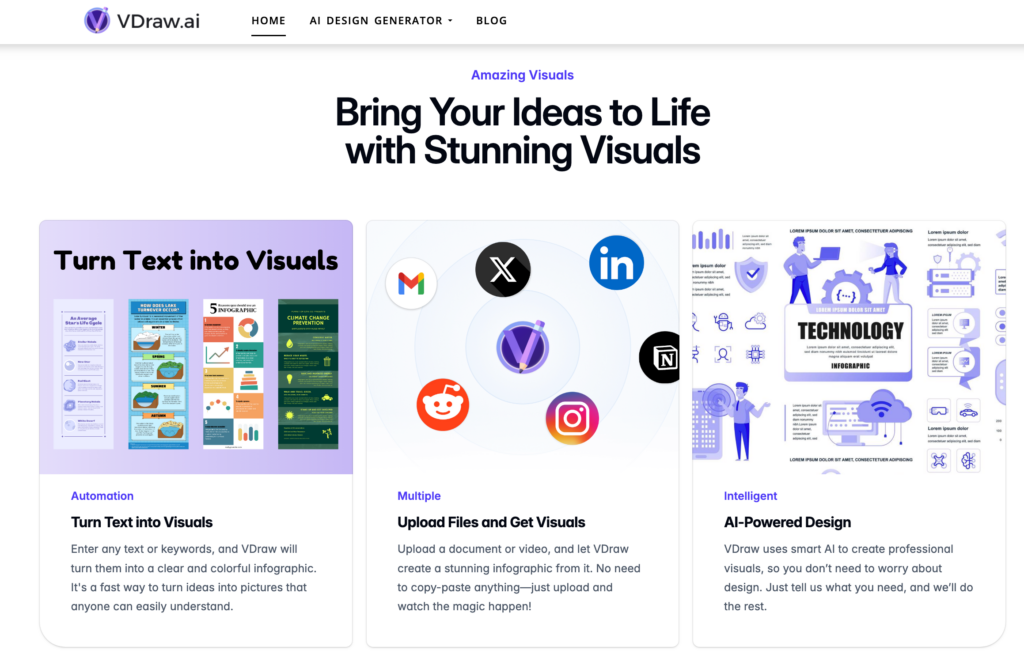
2. Note-Taking Enhancements
Modern note-taking tools have evolved to specifically address the needs of video learners. These sophisticated applications offer:
- Timestamp-based annotations
- Automatic transcription services
- Cloud synchronization capabilities
- Collaborative note-sharing features
- Integration with learning management systems
How to Use VDraw Effectively
Step 1: Video Selection
Choose educational YouTube videos that align with your learning goals. Look for:
- Clear, well-structured content
- Reputable creators
- Appropriate length
- Relevant topics
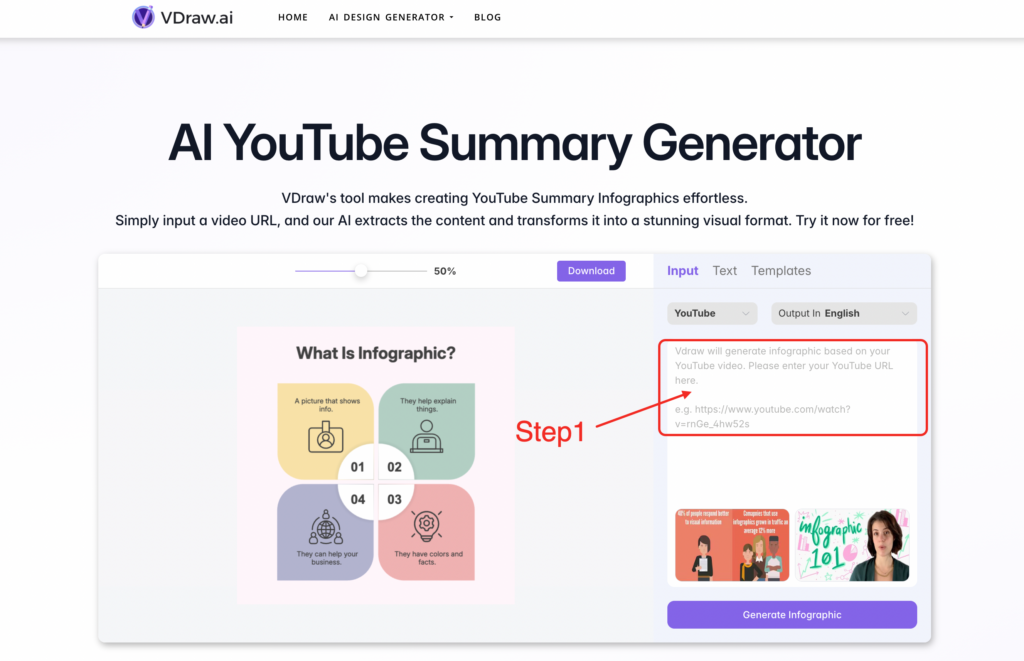
Step 2: Generate Summary
Using VDraw's AI YouTube Summary Generator intuitive interface:
- Copy and paste the YouTube URL
- Click the generate button
- Wait for the AI to process the content
- Review the automatically generated infographic
Step 3: Customize Your Summary
Make the infographic your own by:
- Selecting different templates
- Adjusting text content
- Modifying visual elements
- Adding personal notes
- Organizing information hierarchy
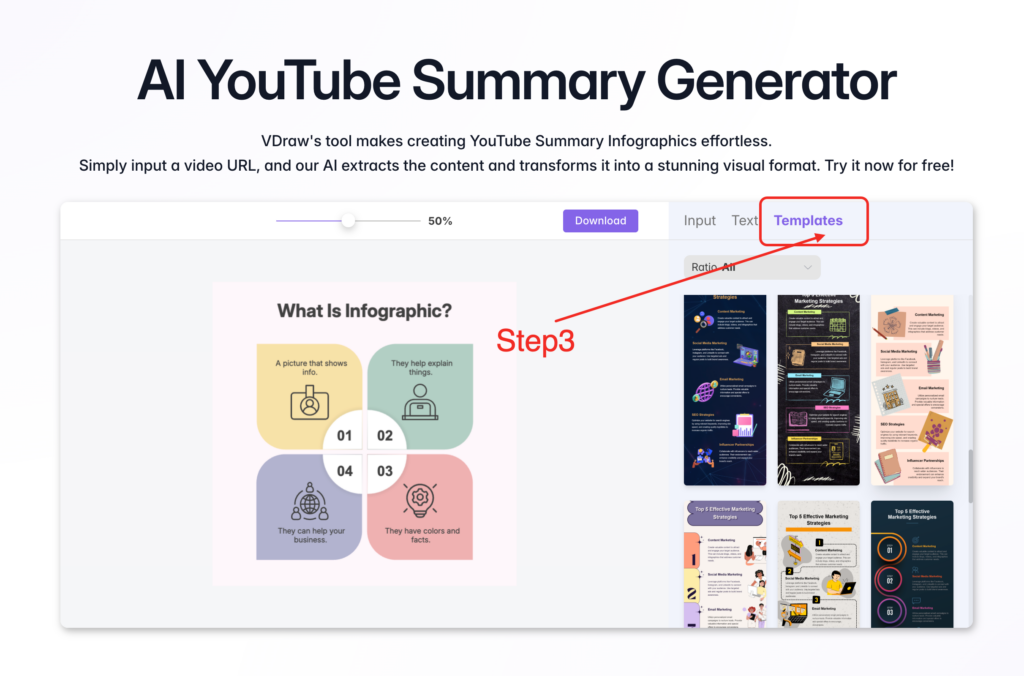
Step 4: Export and Apply
Maximize the value of your summary by:
- Downloading in high resolution
- Sharing with study groups
- Creating study material collections
- Using for quick review sessions
Conclusion: The Future of Video Learning
As we move deeper into the digital age, learning through video is not just a trend—it's becoming the cornerstone of modern education. The evolution of this field continues to accelerate, driven by technological advances and changing learner needs.
Emerging Trends in Video Learning
The future of learning within video looks incredibly promising, with several key trends shaping its evolution:
- AI-Enhanced Learning
- Personalized learning paths based on viewing habits
- Automated content summarization and visualization
- Intelligent content recommendations
- Real-time translation and localization
- Immersive Technologies
- Virtual Reality (VR) educational experiences
- Augmented Reality (AR) demonstrations
- 360-degree interactive learning environments
- Mixed reality collaborative spaces
- Advanced Analytics
- Detailed learning progress tracking
- Engagement pattern analysis
- Performance prediction models
- Personalized improvement suggestions

The Road Ahead
The future of learning through video extends far beyond traditional educational boundaries. We're moving toward an era where:
- Hybrid Learning becomes the norm, combining the best of video learning with traditional methods
- Artificial Intelligence continues to enhance content delivery and personalization
- Global Accessibility increases through improved infrastructure and technology
- Interactive Learning evolves with new technologies and teaching methodologies
Final Thoughts
Digital visual education is transforming from a simple content delivery method into a comprehensive educational ecosystem. Whether you're a student, professional, or lifelong learner, embracing multimedia instruction isn't just about staying current—it's about preparing for a future where continuous learning is both essential and engaging.
The tools and platforms we use today, from AI-powered summarizers to interactive learning environments, are just the beginning. As technology continues to evolve, screen-based education will become even more immersive, personalized, and effective.
Start your visual learning journey today, and become part of this educational revolution. The future of learning is visual, interactive, and accessible to everyone—and it's happening right now.